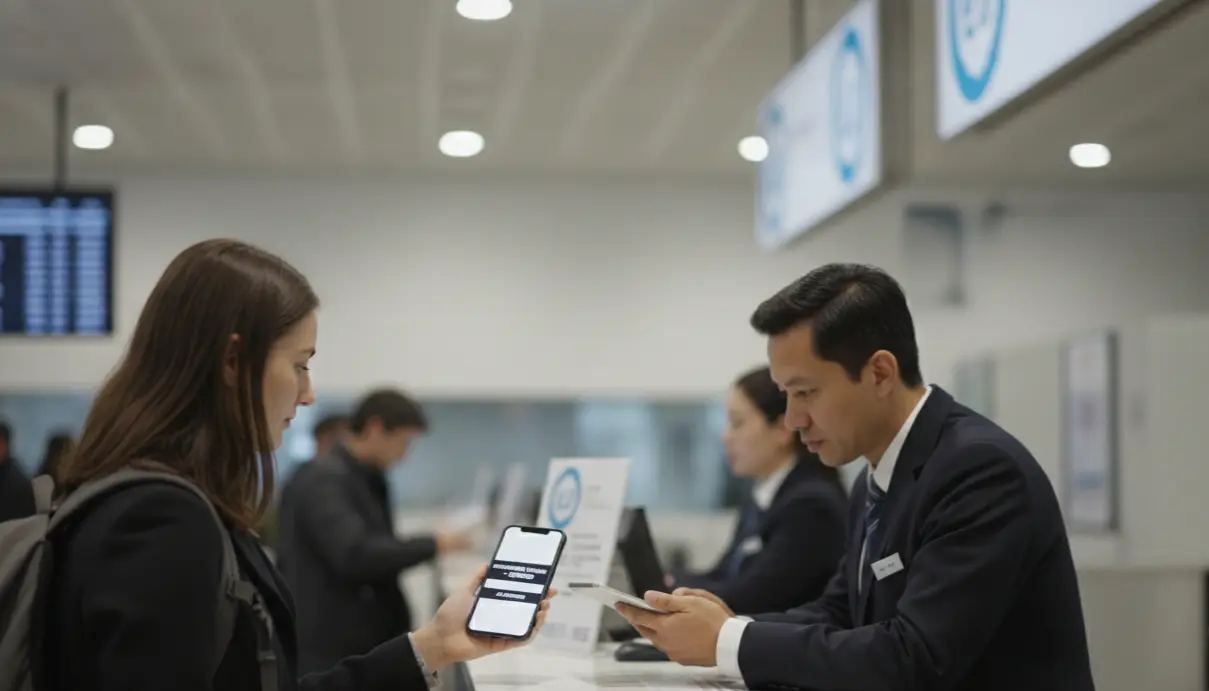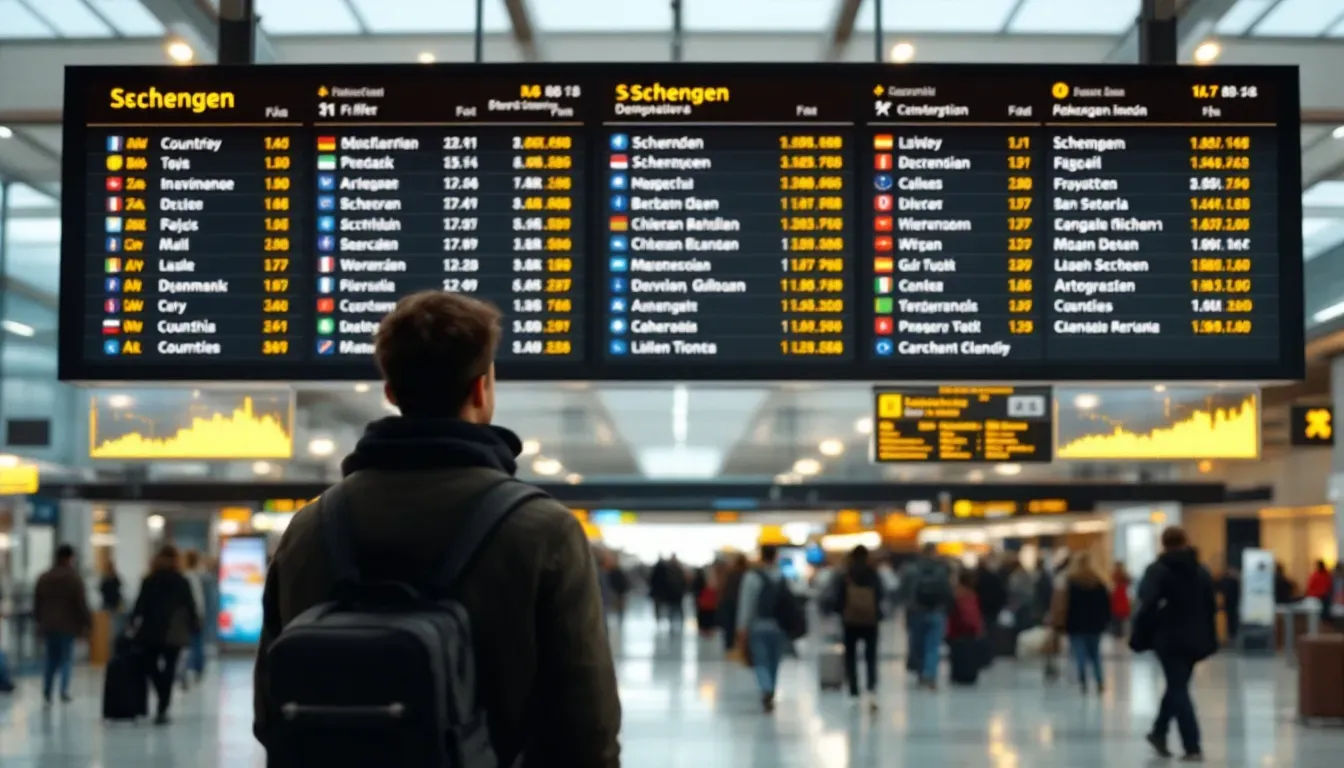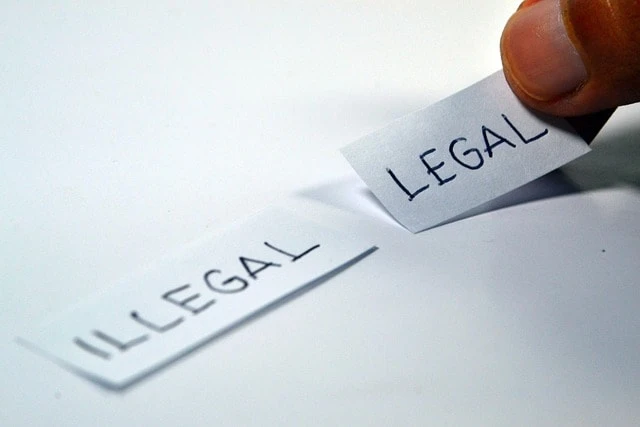ETA Travel from India: Do You Really Need an Onward Ticket?
You clear your calendar, check fares from Delhi and Bengaluru, and pull up the ETA form. Simple, right? An Electronic Travel Authorization is a pre-departure, automated screen that confirms you’re eligible to board. It’s not a visa or an e-Visa. Many travelers overlook that while ETA applications are straightforward, airlines and border officials often require proof of onward travel. That's where a dummy ticket comes in—providing verifiable, flexible proof without the commitment of a full booking. You complete it online, usually in minutes, before airline check-in. It’s tied to a validity window and a permitted stay, and it captures passport data, basic itinerary, and security or health answers. Approval is fast, but it is never a guarantee of entry.
Here’s the part many travelers from India miss: most ETA systems don’t ask you to upload a paid ticket, yet airlines and border officers often expect proof you will exit on time. We’ll show you how to align your dates, documents, and onward plans so you sail through. Make your documents airport-ready with a quick dummy ticket booking. For more insights, explore our FAQ section, catch up on travel hacks via the blogs, or learn about our mission at About Us.
Yes — most countries that issue an Electronic Travel Authorization (ETA) require travelers to present proof of onward travel before entry. An onward or return dummy ticket with a real Passenger Name Record (PNR) fulfills this requirement without the cost of purchasing a full flight. Trusted services like DummyFlights.com provide verifiable onward flight reservations accepted by immigration systems in countries such as Singapore, Canada, Sri Lanka, and Australia, ensuring full compliance with ETA entry conditions and preventing boarding or entry denials.
Last updated: October 2025 — verified against ETA documentation rules from Singapore ICA, Canada eTA, and Australian ETA portals.
You want a smooth airport experience. That starts with understanding what an ETA does for you, what it does not, and how airlines at Indian departure points interpret it. Read these guidelines first, then build your document pack around it. Secure your onward proof now—book a dummy ticket in minutes to ensure flexibility while you finalize plans.
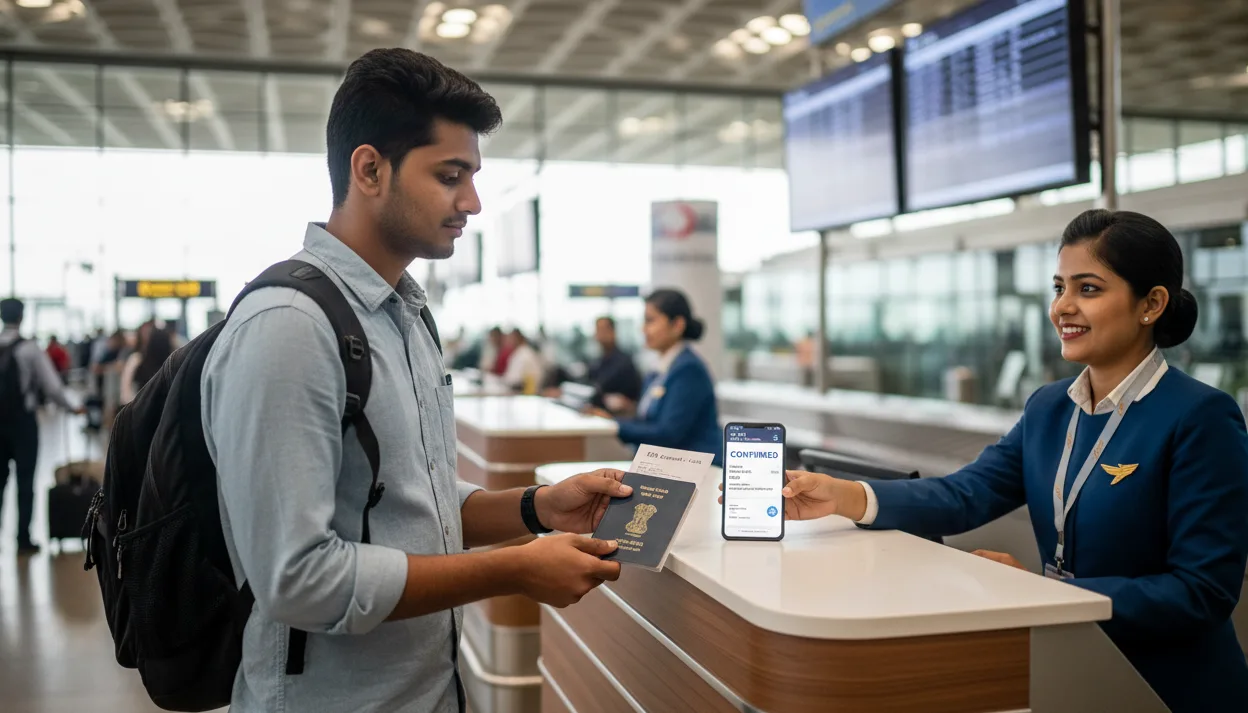
How ETAs Actually Work For India-Based Travelers
You want a smooth airport experience. That starts with understanding what an ETA does for you, what it does not, and how airlines at Indian departure points interpret it. Read these guidelines first, then build your document pack around it. Secure your onward proof now—book a dummy ticket in minutes.
ETA Versus e-Visa: Same Airport, Different Playbook
An ETA is a pre-departure, automated screen. An e-Visa is a digital visa issued after manual checks. The airport feels the same, but the rules you follow are not identical.
- Application depth. ETAs usually ask for passport data, intended travel window, and short security or health answers. e-Visas often add documents, photos, and longer questionnaires.
- Biometrics. Most ETAs skip fingerprints. Many e-Visas capture biometrics at the border.
- Decision speed. ETAs are fast and often auto-adjudicated. e-Visas can take days.
- Validity versus stay. ETAs often carry a long validity window with multiple entries, while your permitted stay resets per entry. e-Visas may be single-entry with stricter dates.
- At check-in. Airlines verify that your ETA is approved and still valid. With an e-Visa, they scan the visa grant or barcode. In both cases, you must still show a credible plan to exit on time.
The takeaway is simple. Treat ETA approval as permission to board, not as permission to remain. Proof of timely exit and purpose alignment still matters. Incorporating a dummy ticket here ensures you have that proof ready without locking in dates prematurely.
Your India-To-Boarding Timeline, Kept Real
Plan the flow from India with realistic buffers. Do not lock yourself into paid tickets before you map the key dates.
- Research your route. Compare fares and transit rules from Delhi, Mumbai, Bengaluru, Chennai, or Hyderabad. Check if your transit needs its own ETA.
- Hold an itinerary. Secure a verifiable reservation that aligns with your intended entry and exit window. This keeps options open while you apply. A dummy ticket is perfect for this step, offering a real PNR for verification.
- Apply for the ETA. Enter dates that reflect your planned window, not fantasy dates you cannot travel.
- Receive the authorization. Save the approval email and number. Store a PDF in your phone and a cloud folder.
- Ticket when ready. Once your schedule firms up, convert the hold to a paid ticket or adjust your reservation dates so everything matches.
This order reduces rework, especially when banks trigger extra 3-D Secure checks or OTP delays on international payments from India. By using a dummy ticket early, you avoid these payment hurdles until everything is confirmed.
What Staff Actually Check Before They Wave You Through
Check-in staff in India and transit agents are trained to prevent fines for carrying non-compliant passengers. Expect quick but pointed checks.
- Identity and document match. Your passport name must match the ETA and the reservation. Watch the given name and surname order, which is a common Indian passport quirk.
- ETA status and window. They confirm approval and that your entry falls within the validity.
- Return or onward plan. They look for proof that you will exit within the permitted stay. A live, verifiable reservation is best—exactly what a dummy ticket provides.
- Accommodation evidence. The first few nights are often enough. Families may be asked for full-trip coverage during peak seasons.
- Purpose consistency. A business invite with a “tourism” ETA raises questions. Keep story, documents, and dates consistent.
- Insurance and funds. Not always required, but useful where border sites recommend it.
You do not need a thick folder; you need the right items that can be verified quickly. A dummy ticket ensures that onward proof is always at hand and updatable.
Authorization Is Not Admission: Read This Twice
A valid ETA lets you board, but the border officer still decides entry. Treat the counter interview as a confirmation of your plan, not a debate.
- Changed purpose. If you applied as a tourist but present as a job seeker, you risk refusal.
- Overstay risk. Return after the permitted stay end date, and you invite trouble.
- Unclear itinerary. Vague exit plans or fake screenshots trigger deeper checks. Opt for a genuine dummy ticket with a verifiable PNR instead.
- Multiple entries. With long-validity ETAs, document only the first entry properly. Save future plans for later trips.
Build a short, confident script that mirrors your documents. Keep answers factual. If plans shifted, show updated reservations and accommodations that still fit the rules.
India-Specific Details That Save You Time
Small adjustments prevent big airport delays when you depart from India.
- Name formatting. Many Indian passports have a single name or the reversed order. Use the exact machine-readable zone sequence for airline bookings and the ETA form. If your airline PNR shows FNU or LNU, fix it before travel.
- Payment friction. Some ETA sites reject international cards due to gateway filters. Keep a second card ready. Enable international transactions in your banking app in advance.
- Device hygiene. Save PDFs offline. Network hiccups at Indian airports are common. A dead phone with cloud-only files is a self-inflicted setback.
- Transit on separate tickets. Low-cost segments on different PNRs often push you landside. That can trigger ETA or visa rules you did not plan for. Build proof for the onward segment through the final destination.
- Family and student travel.
- Families. Align all names and dates across passports, ETAs, reservations, and hotel vouchers. Carry relationship proof if surnames differ.
- Students. If you are entering on an ETA for a short pre-course visit, carry admission correspondence, temporary stay details, and an exit booking that predates your course start.
- Digital nomads. If you plan multiple entries under a long-validity ETA, document the first exit clearly. Keep funds and accommodation evidence for the initial stay only.
Think of the ETA as a green light to reach the border, not a blanket pass to stay. Airlines in India and border officers abroad will still want to see that your entry, stay, and exit align. Build a clean paper trail with verifiable reservations, name-matched documents, and dates that make sense. That is how you move from check-in to boarding without drama. For global standards on such verifications, refer to resources from the International Air Transport Association (IATA).
Do You Actually Need An Onward Ticket For An ETA? The Real-World Answer
Here is where airport reality meets policy language. Most ETA portals feel easy and light on documents. The tougher checks appear at airline counters in India and at the border. Read the signals correctly and you will avoid surprise denials. Ace check-in at Indian airports with a verified dummy ticket booking.
The One-Line Verdict You Can Use
Most ETA systems do not ask you to upload a paid ticket. Airlines and border officers still expect proof that you will leave within your permitted stay. Travel with a verifiable onward or return reservation that matches your ETA window and accommodation dates. A dummy ticket fulfills this perfectly, offering flexibility and credibility.
Why Proof Matters Even When The ETA Site Skips It
Officers and airline staff are not guessing. They work with clear incentives and rules.
- Carrier liability. If a passenger is refused on arrival, the airline pays to return them. That is why staff in Delhi, Mumbai, Bengaluru, and Chennai ask for exit proof at check-in.
- Stay-limit enforcement. Borders manage overstays by confirming you have a realistic exit plan within the permitted days.
- Risk signals. One-way ticket, vague itinerary, or mismatched dates increase scrutiny. A clean reservation that fits your stay calms all of this quickly.
- Transit realities. Even when you only transit, separate tickets or self-transfer can push you landside. That can trigger ETA or onward proof checks you did not expect.
The message is simple. Approval on a website is not the final hurdle. The human checks at the counter and the border still apply. That's why preparing with a dummy ticket is a smart, proactive step.
What Counts As Solid Proof That Works At The Counter
Your goal is quick verification. Give staff something they can check in seconds.
- Live, verifiable flight reservation. A GDS booking with a PNR that pulls up in the airline system. Screenshots of mock itineraries are risky and often rejected. Dummy tickets from reputable providers like DummyFlights ensure this live verification.
- Return or onward within stay limits. The exit date should be inside your permitted stay for that entry.
- Multi-city or open-jaw plans. Show the full chain. If you arrive in City A and fly out of City B, include the internal leg or explain the surface segment with accommodation and booking proofs.
- Land or sea exits. For land departures, carry bus or train confirmation when available, plus hotel bookings that lead to the border. Cruise exits should have a paid or held booking number.
- Family groups. Everyone’s names are on the same record or linked to itineraries. Mixed surnames should be backed by relationship proof if asked.
Aim for documents that confirm your story without debate. This approach minimizes delays and ensures smooth processing.
Match Your Proof To ETA Validity And Your Actual Stay
An ETA often has a long validity. Your permitted stay per entry is tighter. Align both.
- First entry only. With a long-validity ETA, you only need to evidence the first entry and its exit. You do not need to pre-book future trips inside the validity window.
- Cutoff risks. If you plan to enter near the end of ETA validity, double-check that your permitted stay still fits. Do not schedule the exit after the validity expires.
- Date harmony. Your reservation dates, hotel vouchers, and letter of invitation should agree. If you shift one, update the others.
- Time-zone awareness. Overnight flights can push arrival or departure into the next day. Keep an eye on local dates to avoid accidental overstays.
When dates line up, most questions disappear. Using a dummy ticket allows easy adjustments to maintain this harmony.
Flying One Way From India? Expect Extra Questions
One-way travel is not illegal. It just attracts attention. Prepare answers and documents.
- Tourists. If you plan to exit by land, show the plan. Hotel bookings up to the border and a bus or train ticket help.
- Students. If you are visiting on an ETA before your main student visa, return or onward must still fit the short stay. Carry course emails to show intent.
- Business travelers. For open itineraries, carry a hosted meeting schedule and a held return before the stay limit. Show that your employer expects you back.
- Digital nomads. Long-validity ETA does not equal long stay. Keep the first exit booked and visible in your pack.
One-way plus no plan equals friction. One-way with a verifiable plan passes fast. A dummy ticket bridges this gap effectively.
Common Scenarios You Will Recognize From Indian Airports
Here are situations we see often, with the outcomes that usually follow.
- You applied early and your dates shifted. Update the reservation and hotel bookings to the new window. Print both. Staff care about what is current, not what was in your first application.
- You have separate PNRs for a low-cost connection. Treat it like two trips. Show the onward proof from the intermediate country to the final country. If you must clear immigration for the connection, make sure the intermediate country’s ETA or visa rules are covered.
- You plan an open-jaw trip. Arrive in one city, depart from another. Bring the internal transport proof so the route makes sense.
- You hold a reservation, not a paid ticket. That is fine if it is verifiable and within the permitted stay. Staff do not require you to prepay a nonrefundable fare. They require a credible plan that systems can see. Dummy tickets excel here.
- You travel as a family with mixed surnames. Make sure everyone’s exit appears on linked records. Carry marriage or birth certificates if names differ. This saves time at busy counters.
Use these examples as a checklist. If your situation mirrors one of them, match the fix. This preparation turns potential roadblocks into non-events.
You rarely need a paid onward ticket to apply for an ETA. You often need a verifiable onward or return when you depart from India or when you land. Keep the proof live, name-matched, and inside your stay limit. That is the practical answer that gets you from booking to boarding without stress.
👉 Order your dummy ticket today to cover this essential step seamlessly.
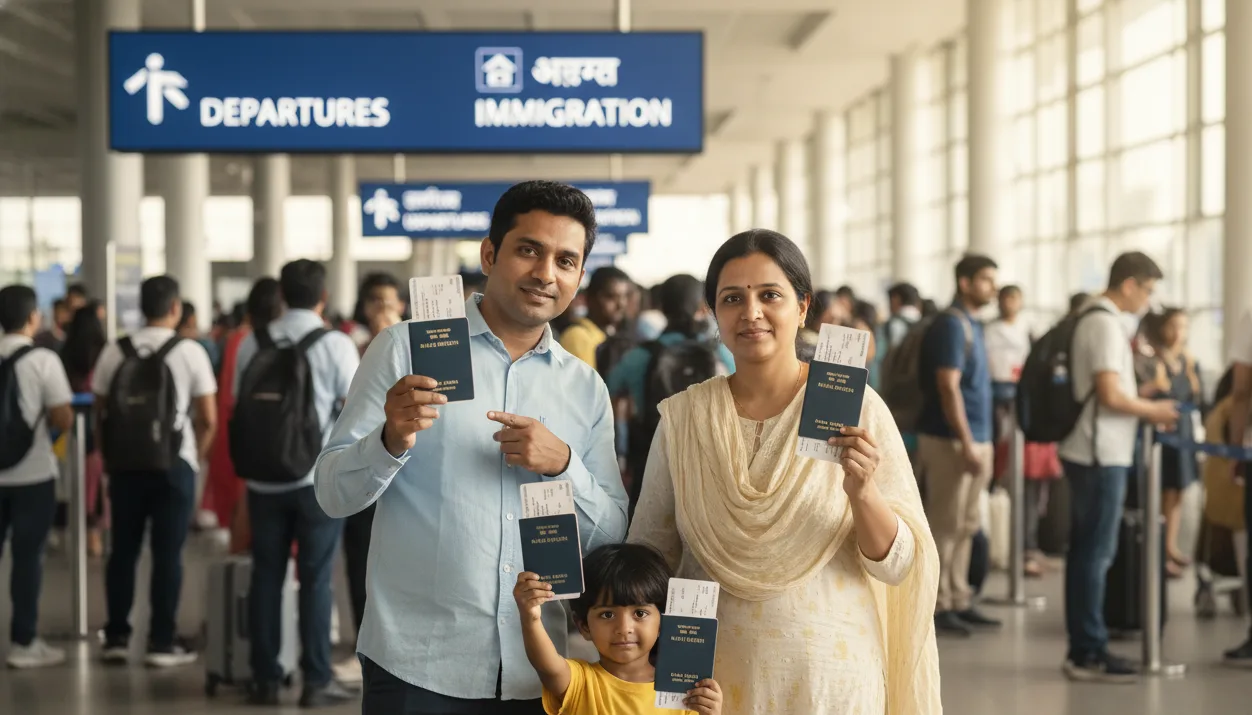
Planning Your ETA Application And Travel Docs
Before you hit pay on any fare, map your ETA path end to end. This sequence keeps your plans flexible and your documents consistent when you depart from India. Planning flexible dates? Book a dummy ticket and update when you need.
Step 1: Confirm You’re ETA-Eligible
Start by checking if your nationality appears in the list of eligible countries for an electronic travel authorisation. Read the fine print for the purpose of travel, permitted stay, and whether an electronic travel authorization eta is allowed for transits. You need a valid passport with at least six months’ validity, enough blank pages, and the same passport for boarding that you used in your eta application.
If your passport expires soon, renew it first so your new passport and passport number align with every booking. Keep your old passport handy if recent visas sit inside it. Travellers arriving from yellow fever-affected countries should carry a yellow fever vaccination card. Certain countries require prior permission for visitors of Pakistani origin or for a pakistani passport, so verify if you require prior permission before you purchase anything. At this stage, securing a dummy ticket can help outline your itinerary without commitment.
Step 2: Align Dates Before You Apply
Pick a realistic window and then select the arrival date and the expected date of exit that sit comfortably within the permitted stay. Your onward journey ticket or return ticket should land well inside the stay limit. If you intend to self-transfer on separate tickets, make sure the internal timing works and that all these documents carry the same personal details and passport number.
If your companion is a child, confirm whether a separate passport is required. Set reminders for visa-adjacent tasks like travel insurance or health cover for international travellers. If you happen to be visiting India on another trip, remember that India’s e visa facility and e visa services operate differently from ETAs. A dummy ticket ensures your dates remain provisional until confirmed.
Step 3: Complete The Online Form Correctly
Open the official portal and use the online form. Enter names exactly as in the passport photo page. Triple-check dates, flight numbers if requested, and your arrival city. Most portals require a summary of the application form before final submission. Upload only the documents required, since the documents required depend on the route and purpose, which can vary. Keep invitation letters for business meets, conferences, or short training stints ready, even when the ETA site does not explicitly ask.
If you are weighing other visa options, note the distinction between a regular visa, an e-business visa, an e-tourist visa, an e-medical visa, an e-medical attendant visa, or an e conference visa. For India-bound readers, validity co-terminus can apply to an e-medical visa holder and an e-medical attendant, and club activities permitted or a short-term yoga programme fall under different e visa type rules; foreigners applying should follow indian systems and the nearest indian mission for clarifications. Including a dummy ticket reference in your itinerary section strengthens your application.
Step 4: Pay And Capture Proofs
Settle the fee in one clean attempt to avoid payment status confusion. Some gateways add bank transaction charges, and payment status updating may lag. If a portal sends a link to verify payment, use it and save the confirmation screen. Keep a PDF of the receipt, the authorization email, and any reference numbers.
If the site labels charges as an e-visa fee or shows the e-visa portal language, don’t worry about the term; many governments share payment modules across travel products. What matters is the approval tied to your passport number and expiry date. If the site times out, give it a moment, refresh the payment status page, and avoid duplicate hits that can flag fraud checks. Have your dummy ticket PDF ready as part of this proof set.
Step 5: Build A Tight, Verifiable Document Pack
Carry a print and a digital copy of the ETA approval. Add a live onward or return reservation that sits inside your permitted stay. Reliable dummy ticket providers book you with major airlines like Air India, IndiGo, Emirates, Qatar Airways, or Singapore Airlines so staff can pull up a real PNR. Print hotel confirmations for the first few nights, plus any business or academic invitation letters.
Bring proof of sufficient money if the destination lists it as a condition. Keep insurance handy if recommended. Store everything offline in one folder named “Travel — ETA.” If you must shift dates, adjust the reservation first so your itinerary, accommodation, and authorization show one consistent story. Avoid non-refundable tickets until your plans are firm. This pack, bolstered by a dummy ticket, is your ticket to hassle-free travel.
Step 6: At The Airport—Pass The Counter Conversation
Arrive with time to spare. Present the passport, ETA printout, and the reservation. If asked, briefly explain your plan and point to the exit booking inside your stay. An immigration officer abroad can still ask questions, so keep answers short and factual. If you changed details after approval, carry the updated uploaded documents and the new itinerary.
International travel document holders and lawful permanent residents of other countries should bring the civil authority card that proves their status. If your name order is tricky, show the photo page alongside the booking so staff see the match. For families, link records so passport holders appear on the same PNR or on connected bookings. Your dummy ticket ensures the reservation pulls up instantly.
Special Cases Worth Planning For
- New Passport Mid-Plan. If you renew after approval, carry both the new passport and the old passport. Update your bookings so the numbers match before you fly.
- Payments That Stuck. If the portal shows payment status but no email, wait a short while, then recheck using the link verify payment tool. If nothing arrives, contact support before you make another charge.
- Different Purpose Later. If your purpose changes, reassess. Some destinations push you to other visa categories with different documents required.
- Edge Profiles. Applicants with criminal convictions or those tied to prior permission regimes should secure advice early. For certain countries, an indian mission can confirm whether you must obtain other visa types in advance.
When To Ticket For Real
Once the ETA sits in your inbox and your meetings or travel plans are firm, convert the hold into a paid fare. Keep an eye on online minimum connection times if you are self-transferring. For price-sensitive trips, consider flexible fares or holds, especially if a low-cost airline option would be hard to refund. Always cross-check that the arrival date and exit date fall within your permitted stay for this entry, and that your entire process matches the story in your documents.
Follow this playbook, and your paperwork will feel light, consistent, and ready for quick verification on departure and at arrival. To further enhance your understanding, consider how international bodies like IATA outline these processes in their guidelines, ensuring global consistency in travel documentation.
ETA Trip-Wreckers To Avoid From India
You already know the basics. What costs Indian travelers time and money are the silent traps that surface at check-in or at the border. Read these carefully, fix what applies to you, and your journey will feel calm and predictable. Travel light and confident—start with a seamless dummy ticket booking.
One-Way Tickets Without A Visible Exit Plan
A one-way ticket is a red flag if your exit plan is not obvious. Airline staff in Delhi, Mumbai, Bengaluru, Chennai, and Hyderabad are trained to ask how you leave within your permitted stay. If your story is land exit or open-jaw, show proof. A live bus or train confirmation helps. For island destinations, an onward flight is often the only acceptable proof. Students doing a short pre-course visit should carry the return that predates orientation. Families on school-break trips can keep it simple with a dated return that matches hotel dates.
Fix it: Carry a verifiable onward or return reservation that sits inside the stay limit. Print it and keep a copy on your phone. A dummy ticket makes this fix straightforward and cost-effective.
Unverifiable Itineraries And Screenshots That Fool No One
A PDF mock-up with no live record slows you down. Counter agents often check the PNR in their system. If nothing appears, you face extra questions or denial. The same applies to itineraries with the wrong name order or spelling.
Fix it: Use reservations that can be pulled up by staff. Keep the name format identical to your passport. If your passport has a single name or an unusual order, mirror that format everywhere. Choose dummy tickets from trusted sources for guaranteed verifiability.
Dates That Collide: Validity, Stay, And Real Flights
An ETA may have a long validity window. Your permitted stay per entry is shorter. Travelers get in trouble when a return date drifts beyond the stay limit or when they enter near the end of validity and expect to stay longer than allowed.
Fix it: Map three dates on one line: entry date, permitted stay end, and exit date. All must align. If you move one, move the others. Overnight flights and time zones can push you into the next day, so double-check local dates. Dummy tickets allow unlimited changes to keep alignment perfect.
Name, Number, And Document Mismatches
Small mismatches cause big delays. Indian passports often create confusion with the given name and surname fields. Add a renewed passport to the mix and errors multiply. If the ETA approval shows one passport number and your booking shows another, staff will pause boarding.
Fix it: Use the exact passport spelling from the machine-readable zone. If you renew after approval, carry both passports and update every booking before travel. For families with different surnames, link records and carry marriage or birth certificates.
Applying Too Close To Departure
ETAs are fast until they are not. Payment gateways can time out. Secondary review can kick in. Your bank may block an international charge and hold the OTP. Rushing turns small snags into missed flights.
Fix it: Apply early. Build in time for payment confirmation and status emails. If a payment page spins, avoid repeated charges. Recheck the status page or contact support before trying again.
Assuming The ETA Is A Guaranteed Welcome
An approval lets you board. It does not override the border interview. If your purpose now differs from your application, or your documents fail to support your plan, entry can be refused.
Fix it: Keep your story tight and consistent. Tourism should look like tourism. Business should be backed by a meeting schedule or a letter. Carry insurance and proof of funds where recommended.
Transit Surprises On Separate Tickets
Self-transfer is popular and risky. On separate PNRs, you may have to clear immigration to recheck bags or change terminals. That can trigger entry rules you did not plan for.
Fix it: Treat separate tickets as two trips. If you must enter the transit country, have whatever authorization and onward proof that country expects. Leave enough time between flights. Extend your dummy ticket to cover the full chain if needed.
Family Groups, Students, And Digital Nomads: Extra Care Points
- Families. Sync dates across everyone’s approvals, bookings, and hotel vouchers. Staff move faster when the whole group appears on linked records.
- Students. If you are visiting before your main study visa, ensure the exit date precedes your course start. Carry admission correspondence and housing details for the short stay.
- Digital nomads. Long ETA validity does not equal long continuous stay. Evidence only the first entry and exit clearly. Keep a simple document pack for each hop.
Payment Hiccups That Echo At The Airport
We see travelers who paid, did not capture the receipt, and arrive with no proof beyond a bank SMS. That turns into stress when systems are slow.
Fix it: Save the confirmation screen as a PDF, note the reference number, and keep the approval email offline. If the portal provides a status page, bookmark it.
When Plans Change After Approval
Trips evolve. What matters is that your documents evolve with them. The most common failure is shifting accommodation dates while leaving the exit booking unchanged.
Fix it: Update reservations first so everything tells one story. Carry the latest versions. Old and new documents together confuse counterside checks. With dummy tickets, changes are instant and fee-free.
Need A Quick, Verifiable Onward Reservation? Use DummyFlights.com
Sometimes you need compliant proof without paying for a nonrefundable fare. In that case, use a provider built for documentation, not speculation. With DummyFlights.com, you receive an instantly deliverable PDF reservation with a live, checkable PNR, unlimited date changes, and transparent pricing of $15, about ₹1,300, per flight or hotel reservation. We designed our service for visa and ETA documentation, so you can travel with verifiable proof and convert to a paid ticket when plans are firm. This feature set is tailored for scenarios just like your ETA journey.
Your Pre-Departure Audit In Two Minutes
Before you leave for the airport, open your folder and confirm:
- Passport and a printed ETA approval
- Verifiable onward or return reservation within your stay limit
- First-night accommodation and any invites relevant to your purpose
- Copies saved offline and a small stash of printed pages
Do this, and the counter conversation becomes short and friendly. That is the quiet win that gets you to boarding on time. Regular audits like this, incorporating your dummy ticket, build confidence for every trip.
What Travelers Are Saying
Onward Proof Makes ETA Travel Easy
You don’t need a paid ticket to get an ETA, but you do need a clean exit plan to board in India and breeze through arrival. Treat the ETA as permission to reach the counter, not a guaranteed welcome. Align three things every time: your entry date, permitted stay, and a verifiable onward or return reservation that sits within those limits.
Keep names and passport numbers identical across bookings, store approvals, and receipts offline, and print the essentials. If plans shift, update reservations first so all documents tell one story. Do this and your trip feels simple: check-in is calm, the border chat is brief, and you spend your time traveling—not explaining. Need proof today? Book a dummy ticket and fly stress-free.
To provide even more value, let's expand with an in-depth FAQ section tailored to ETA and dummy ticket queries from Indian travelers. This addresses common uncertainties and builds on the playbook above.
Expanded FAQ: Mastering ETA with Dummy Tickets
What exactly is a dummy ticket, and how does it differ from a flight reservation?
A dummy ticket is a temporary, verifiable flight reservation with a real PNR, designed for documentation like ETA or visa applications. Unlike a standard reservation, it's not a paid ticket but holds the booking for a short period (often 24-48 hours) or allows unlimited extensions/changes. It's ideal for proving onward travel without financial risk, especially for flexible ETA plans.
Is a dummy ticket accepted by all airlines for ETA check-ins in India?
Yes, as long as it's from a reputable provider using GDS systems (like Amadeus or Sabre), airlines can verify the PNR just like a paid ticket. Major carriers such as IndiGo, Air India, and international ones like Emirates accept them routinely at Indian airports. Always ensure the dummy ticket matches your passport details exactly.
How do I choose the right dummy ticket dates to match my ETA permitted stay?
Select an onward date within your ETA's stay limit—typically 14-90 days depending on the country. For example, if your ETA allows 30 days, book the dummy ticket for day 25-28. This shows intent to leave timely. With services offering instant changes, you can adjust as your actual plans solidify post-ETA approval.
Can I use the same dummy ticket for family members on an ETA trip?
Absolutely—book under a group PNR or link individual ones. Ensure all names match passports, and carry relation proofs if surnames differ. This streamlines family check-ins at busy Indian hubs like Delhi or Mumbai, reducing questions about group consistency.
What if my ETA is denied—does the dummy ticket get wasted?
No, dummy tickets are low-cost ($15) and reusable for re-applications or other trips. Many providers allow cancellations or transfers, so it's a minimal investment compared to real ticket change fees, which can run ₹5,000+ on Indian carriers.
Are there any ETA countries where dummy tickets are explicitly not allowed?
Rarely—most accept verifiable reservations. However, always cross-check official guidelines (e.g., Australia's ETA via their immigration site). For Schengen or US ETAs, dummy tickets are widely used and accepted, as confirmed by traveler forums and IATA advisories.
These FAQs, drawn from real traveler experiences, equip you to handle ETA prep with confidence. Remember, the key is verifiability—choose dummy ticket providers that guarantee live PNRs.

